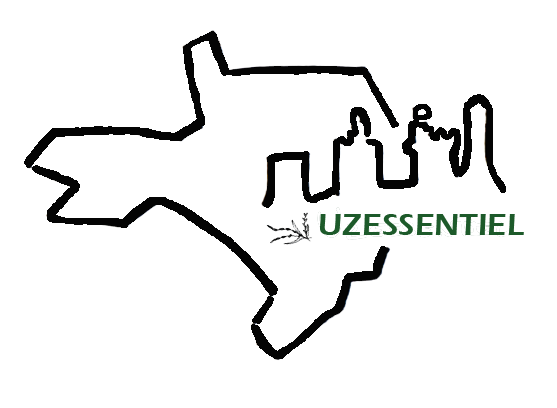The French chocolate factory La Barre Clandestine
- Par nbesse
- Le 02/05/2023
- Dans Local products & recipes
FR - The Barre Clandestine chocolate factory is the story of a shared passion, chocolate...
But it is also a common project for a most radical and successful reconversion.
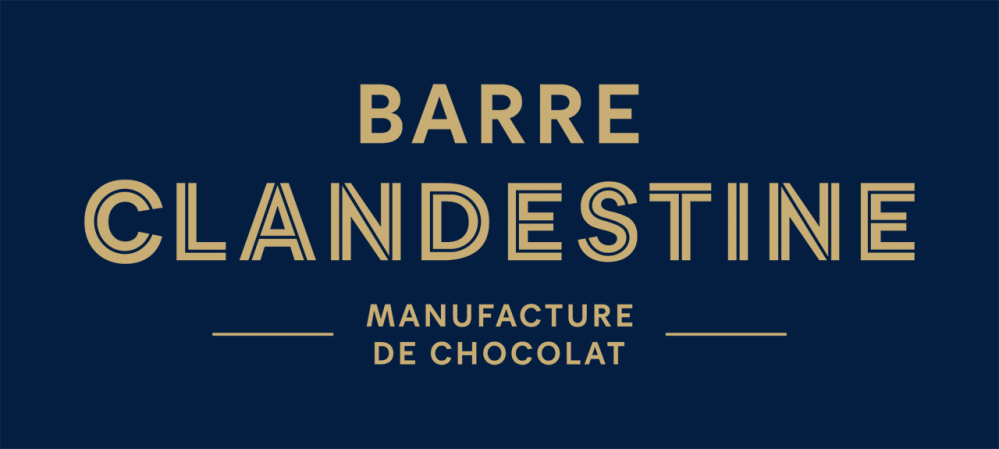
At the helm of the Barre Clandestine are two atypical profiles for such an adventure. Emilie, a former director in the public sector and Emmanuel, a manager in a consulting firm and... magician by night.
|
I fell in love with this job and I couldn't see myself doing anything else: selecting the best beans, imagining recipes to reveal incredible aromas, creating gustatory emotions... (Emilie) Consulting has taught me rigour and high standards, magic has allowed me to cultivate astonishment. It was the same astonishment I had when I tasted Bean To Bar chocolates for the first time. (Emmanuel)
|
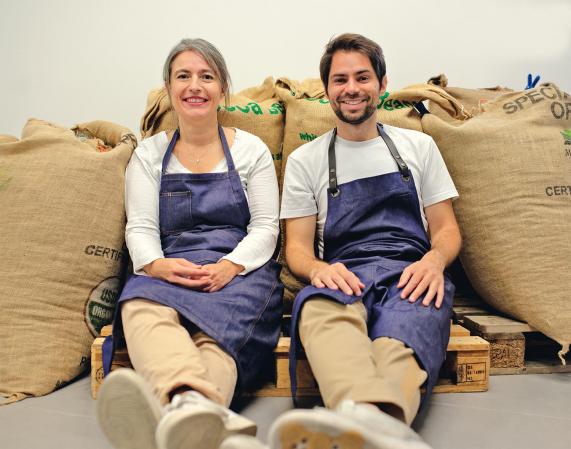
LET'S TALK
Hello Emilie, delighted to welcome you for this Local product paper.
The desire to create your own chocolate has undoubtedly been a path full of twists and turns. Founded in 2022, La Barre Clandestine is now a recognised and growing brand.
Can you tell us about the beginnings of Barre Clandestine alongside Emmanuel?
We both wanted to go into chocolate making. And it was this common passion that led us to follow the training of Corinne Maeght, Bean-To-Bar chocolatier in Anduze in May 2021.
We got to know each other during this training and chose to join forces to combine our talents. Indeed, we have very complementary skills and the distribution of roles came about naturally. Together we validate the strategy, the creation of new recipes and we share the other fields of business management, which allows us to be very efficient. When in doubt (and there are many doubts when starting a business!), we know that we can rely on each other. Sometimes we have different points of view, but that's what often allows us to make the right choices.
The early days of the factory were intense and we had to mobilise unsuspected skills in mechanics and electricity to get our machines up and running! After a month of installation, we were ready to develop our first recipes and make our first batches in order to face our first challenge: our participation in the chocolate fair in Paris, then in Lyon!
You have settled in Gallargues-le-Montueux, about thirty kilometres from Nîmes. Why did you choose this town?
As I live in Castries, I wanted to find a location less than 30 minutes from my home. We were also looking for a town that was well served by the motorway and SNCF networks to facilitate recruitment and travel between the factory and Paris, where Emmanuel has his ties.
We had the opportunity to find premises perfectly suited to our needs in Gallargues and we fell in love with this charming village, halfway between Nîmes and Montpellier, with a strong identity and undeniable tourist and economic potential.
The name La Barre Clandestine is interesting... How did you come up with this name?
La Barre Clandestine evokes an intimate and secret place where you can enjoy our vintage chocolate bars like a wine or a cocktail.
Our graphic universe is inspired by the Gatsby decoration of the 1920s, a perfect setting for our chocolates, whose recipes we work on like cocktails.
|
"This approach, known as Bean To Bar, was popularised in the United States in the 2000s. It is unique in that it promotes low roasting to reveal the delicate flavours of the beans. The Bean To Bar is also a philosophy that encourages transparency and ethics. In France, only 1% of chocolate makers make their own chocolate.
|
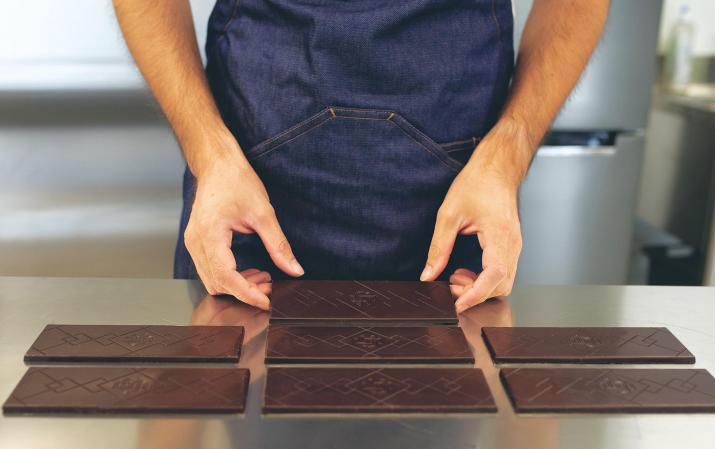
You have become great specialists in Bean To Bar chocolate, which means that you manage the manufacturing of the chocolate beans... What is the challenge of such a process?
On a daily basis, the challenge is the constant search for flavours. Once the beans have been selected, we have to work them in such a way as to bring out the aromatic potential of the bean.
One of the key steps is roasting. We roast our beans at low heat to preserve the aromas. We do a lot of testing to define the roasting profile, which is different for each bean and each vintage. We control the time and temperature. If we change one of these parameters, the taste of the chocolate will change. So we have to be very precise. It's a matter of degrees and minutes!
We also have to measure the amount of sugar, which acts as a flavour enhancer. Here again, each bean expresses itself differently depending on the amount of sugar added.
Finally, we have to control the duration of the grinding (between 2 and 3 days) which also has an influence on the development of the flavours.
Each step requires great precision and it is because we carry out all these steps in a traditional way and on small quantities that we can offer such exceptional flavours in our chocolates.
How did you learn to select your beans and then the bean producers around the world? You chose beans from Tanzania, India, Peru or Belize in collaboration with Silva Cacao with an identity and Uncommon Cacao, two of the world's leading chocolate producers.
The challenge is to select grand cru beans with subtle aromatic profiles and unexpected flavours. We trust our cocoa sources Silva Cacao and Uncommon Cacao to provide us with incredible beans, all grown in an agroforestry and transparent and ethical way.
We have been trained to taste the beans with a world-renowned expert, Chloé Doutre-Roussel, who taught us the method to detect the aromatic potential of cocoa beans. We follow this protocol to choose the beans we want to work with. All of them are organic, but they also have to have very different aromatic profiles: paradoxically, we want to get as far away as possible from the standard "chocolatey" taste to which we are accustomed by the manufacturers, to lead our customers towards aromatic notes of fruit, flowers and spices...
It is the taste that guides our choices. We offer three chocolates of Peruvian origin, but with beans from three different regions and very different aromatic palettes.

Chocolatier and mixologist, it's quite an art.
Tell us how you make your very special Chocolate & Sourdough Bread and Coconut & Chilli Chocolate, "unclassifiable" milky dark ones like Kilombero & Cashew, very dark ones like Maya Mountain or Idukki?
We often start with a desire, such as that of combining real old-fashioned sourdough bread with our chocolate. Then we source the ingredients.
In the case of the bread, we tasted dozens of loaves before finding the one that would go well with our Maya Mountain bean.
It was also a meeting with the Copains du Pic, the bakers who supply us with the meteil bread, whose approach and spirit we liked. We are very proud to put them forward in the description of our tablet!
We then test different recipes to find the one that will delight our taste buds and those of our customers!
Other recipes sometimes come from intuition. It was while testing a recipe for coconut chocolate and a parallel recipe for dark chocolate with espelette pepper that we came up with the idea of combining them in a single recipe. The tomatoey notes of the espelette chilli blend very well with our Kilombero beans and its red fruit notes. It also brings lively and fresh notes that counterbalance well the greedy side of the coconut.
|
Did you know? The Tanzanian Kilombero valley and the Idukki district in the Indian state of Kerala are renowned for the quality of their spices and cocoa.
|
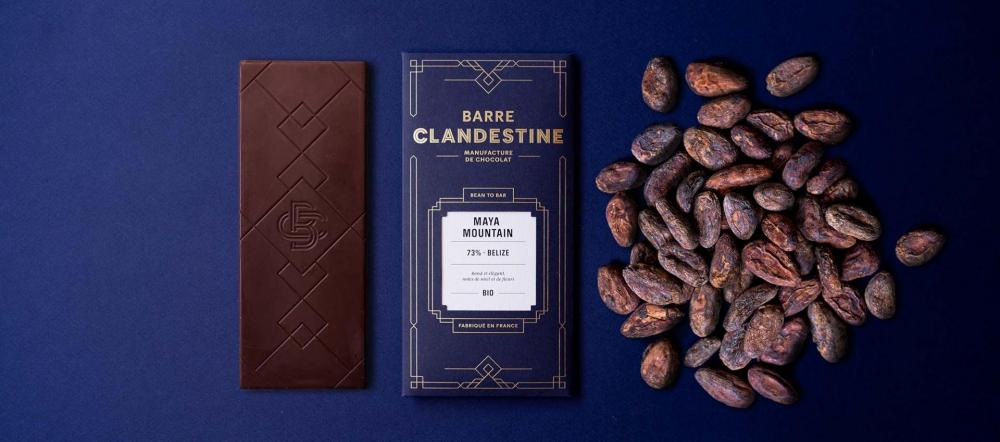
From the bean to the final mould, how long does it take to develop a product?
We have calculated that it takes us about a week to turn the cocoa bean into a bar of chocolate.
This includes sorting the beans, roasting, peeling, grinding, tempering, moulding and packaging.
All of this is done entirely by hand in our factory, not to mention the maturation stage of at least three weeks to allow the flavours to mature and stabilise.
Dark chocolate, intense dark chocolate, would you like to diversify into milk, praline or white chocolate?
This is one of our many thinking of development, as well as the production of chocolate bars with spirits (rum, whisky, cognac, etc.) and the proposal of new formats such as napolitains or a tasting box. We have recently expanded our team with the recruitment of Stéphanie, who holds a CAP in pastry and chocolate making, which allows us to consider new recipes and develop our range.

Cocoa infusions, cocoa nibs (these cocoa bean fragments roasted at a low temperature and crushed) for savoury or sweet culinary preparations and even pure cocoa beans, rich in antioxidants and magnesium, perfect for those little cravings. What's next in the programme?
We are currently working on recipes for granola made with our chocolate and cocoa nibs. We will also develop our range of infusions by proposing recipes combining spices and different flavours with our chocolate pods.
Many thanks to Emilie and Emmanuel for their collaboration on this article and the visuals sent.
Good to know: The Barre Clandestine chocolate factory can be visited.
The right address: The Barre Clandestine chocolate factory, 97 Passage du Poids Public, 30660 Gallargues-le-Montueux.
Contact: bonjour@barreclandestine.com, tel: 04 66 71 10 63.
